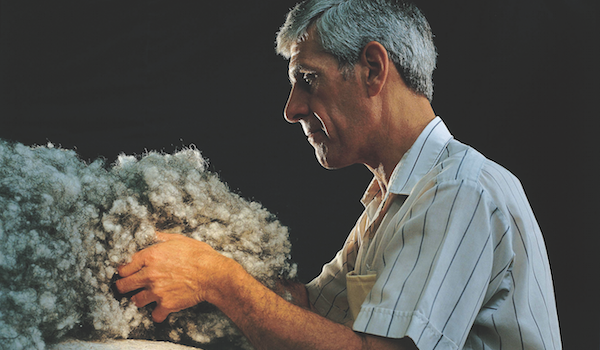
Sleep Tight
As we settle in to the longest night of the year tonight, we look to issue 79 when Kate Myerscough journeyed to the Vispring factory in Plymouth to find out what exactly makes for a good night's sleep...

In 1899 when James Marshall’s wife became ill and confined to bed rest, he – a British engineer settled in Canada – decided to improve the design of their shared mattress for the ease of his loved one. Realising that the key to comfort lay in the bed’s ability to react to different weights and pressures, James invented a mattress in which springs of coiled wire were sewn individually into their own pockets of fabric. With this, at the turn of the 19th century, the Marshall Spring came into being, revolutionising the way we’ve slept ever since.

This innovation was a long time coming, as the mattress evolved throughout history. The earliest ones were likely to have been piles of leaves or straw covered in animal hide; before feather or wool became popular bedding materials, mattresses were often improvised by stuffing hay into a bag for a good night’s sleep during the medieval era. Then in the 19th century, when sanitation began to surface as a crucial factor in the design of bedding, non-disease harbouring metal bed frames became more and more popular alongside the Marshall spring mattress.

James Marshall patented his invention in Canada and the UK, founding the Marshall Mattress company in 1900. The next year, entrepreneurs James Nolon and Frederick James promoted the mattress in the UK, but with local manufacturers unwilling to adopt the process (which would have surely caused some disruption to their businesses) they set up The Marshall Sanitary Mattress Company to produce it themselves. This later became the bedding industry juggernaut known now, simply, as Vispring.

Today the Vispring factory is based in Plymouth where it employs just under 200 people. What many don’t know about the brand is that its heritage can be found, literally, in its name. In ‘Vispring’ the use of the roman numerals for six,VI, remains a subtle reference to the six turns of the coil in the Marshall spring.While the spring remains identical to James’s original 1899 design, the process by which it’s made has since developed...
You can read this article in full in issue 79, the Luna issue.
